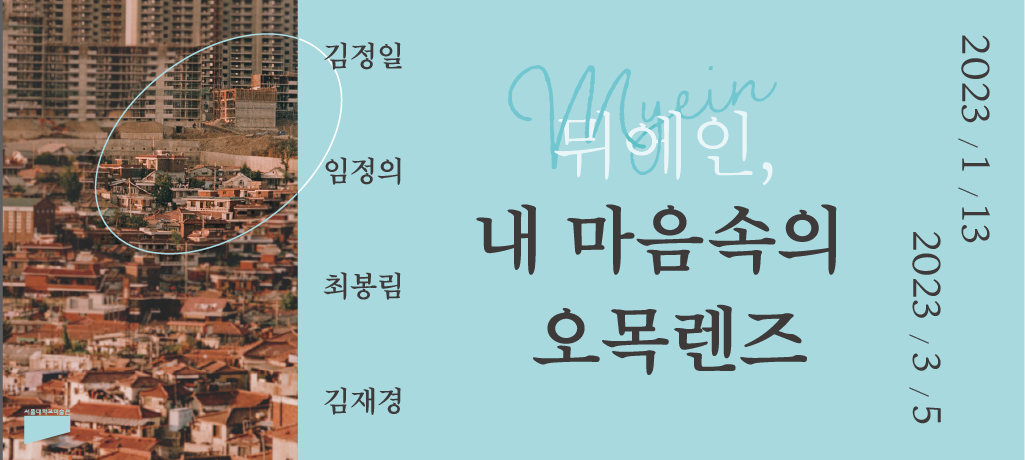Myein, the Concave Lens in my Heart

“The wasteland moved my heart,” (Yi-Fu Tuan)
“The wasteland moved my heart,” said Yi-Fu Tuan, the pioneer of geographical psychology. He shared his experience of the “magnanimity of the mind and spirit” in the desert. He encountered feelings of purity and eternity, which were distinct from the abundance he enjoyed in the Philippines and “the smell of corruption and death” in Panama. I experienced something similar to Yi-Fu Tuan in the stretch of hilltop villages from Sangdo-dong to Bongcheon-dong captured by CHOI Bom-. This is best expressed as topophilia, that is, love for a place of livelihood—the subject of affection and the source of joy and certainty.
In the 1960s and 1970s, Americans saw opportunities for economic prosperity in landscape, viewing places of livelihood as resources and urban regeneration projects. This led to the quick decline of topophilia. Koreans too took part in the sad chronicle of separating places of livelihood from poetry, neighbors, play, joy and purity. LIM Chung Eui declared his photography as “a window into the lives of neighbors.” The fate awaiting such neighbors formed an aesthetic basis for KIM Jungil’s photography. In 1982, the year when around 40 development districts were announced, real estate speculation began, and the rich-poor gap grew out of control. The concept of neighbors, who were once people who shared a sense of space and time, was being phased out by urban regeneration. The perception of space turned cold and heartless. Places were associated with social class through expressions such as “squalid environment” or “low-income housing,” and the cognitive self-torment of removing once-cherished memories spread across society (KIM Jae-Kyeong). Human relationship with land became fragmented and violent. This is a piece of the harsh reality faced by Myein, the Concave Lens in my Heart.
According to HAN Byung-Chul, “When we place rest below labor, we miss the divine.” This is no different from placing our place of life below resources and redevelopment, and suffering (including poverty) below material abundance. In doing so, Koreans have been separated from the divine and holy, that is, myein in our lives.
“Development and learning should not occur in one direction only.” (taa-la’i bla-ma)
Taa-la’i bla-ma stressed that “development and learning should not occur in one direction only.” Being concentrated in a single direction is a sign that something has clearly gone wrong. We must ask ourselves where we are now, and where we are headed. Having a myopic view prevents us from going forward. It is more important than ever to have new interpretations about the past and look further down the road. To correct our shortsightedness, we must increase the magnification of the concave lens in our heart. The path of learning from the past is the same as the path heading towards the future. On this divine path of knowledge, I hope there is a small role to play for Myein, the Concave Lens in my Heart.
I am deeply grateful to KIM Jungil, KIM Jae-Kyeong, LIM Chung Eui, and CHOI Bom- for their work to make this exhibition a reality.
Sim Sangyong, Director
Museum of Art, Seoul National University
* The word myein is an ancient Greek verb meaning to sanctify.


